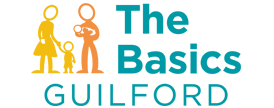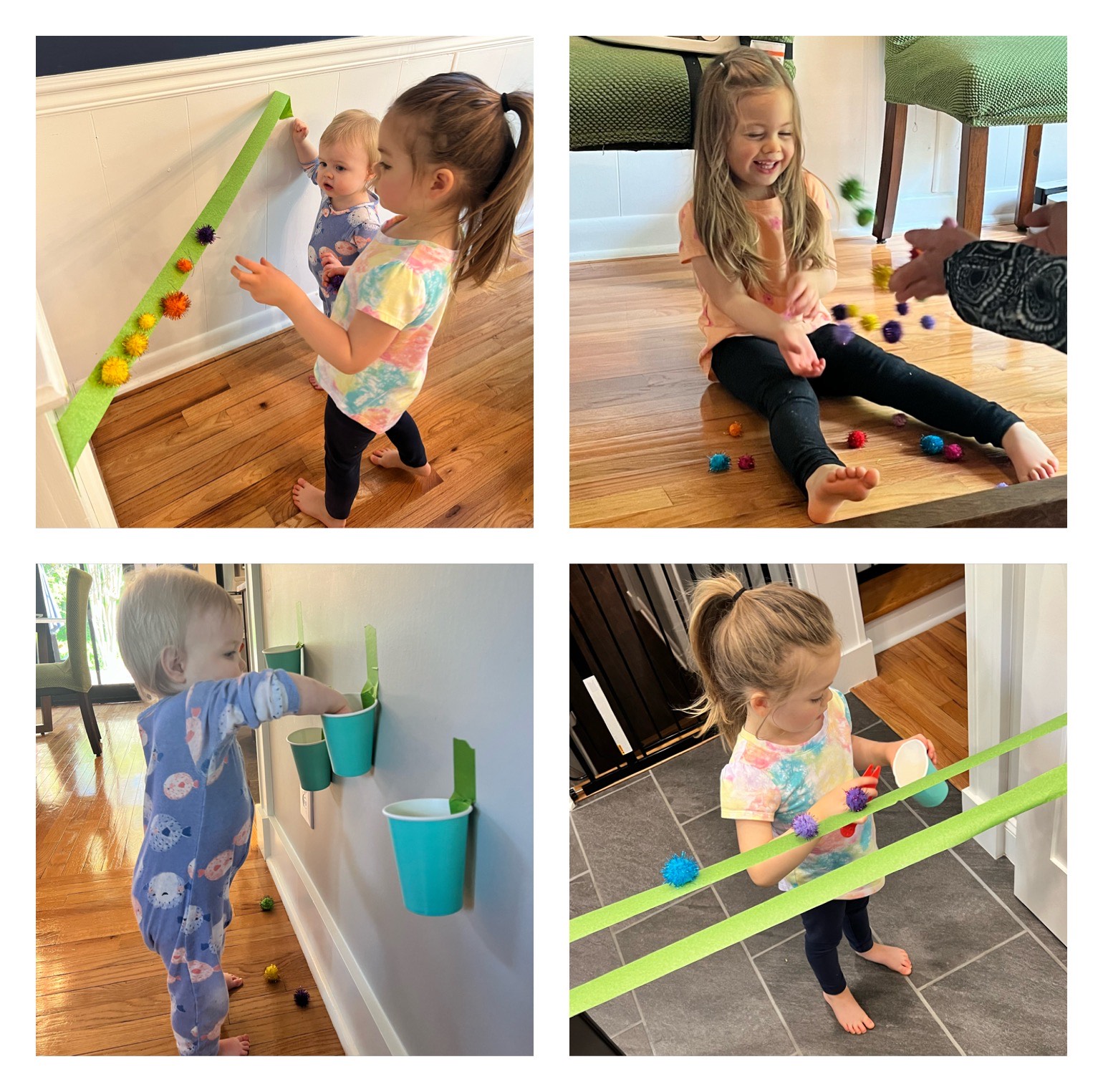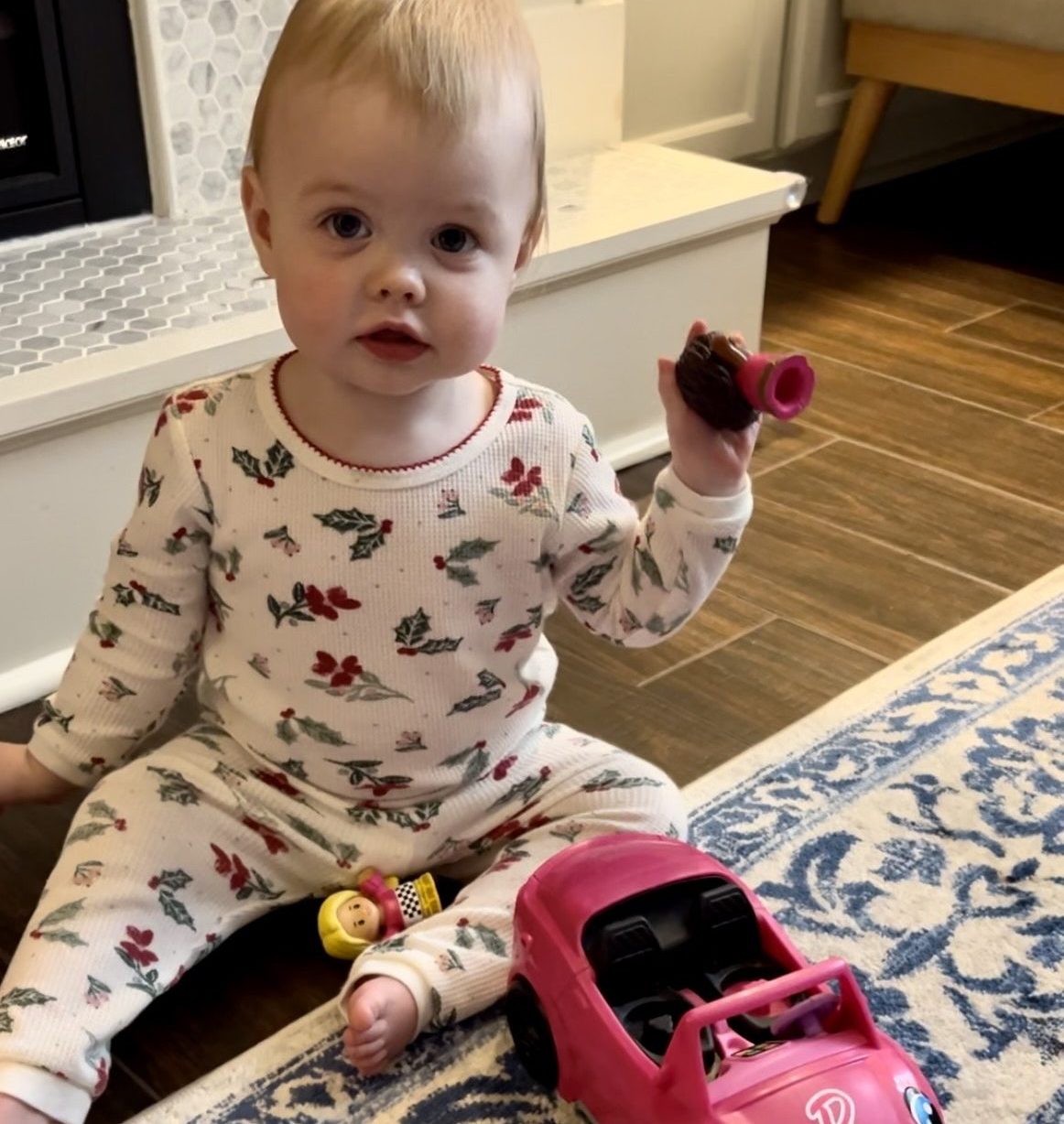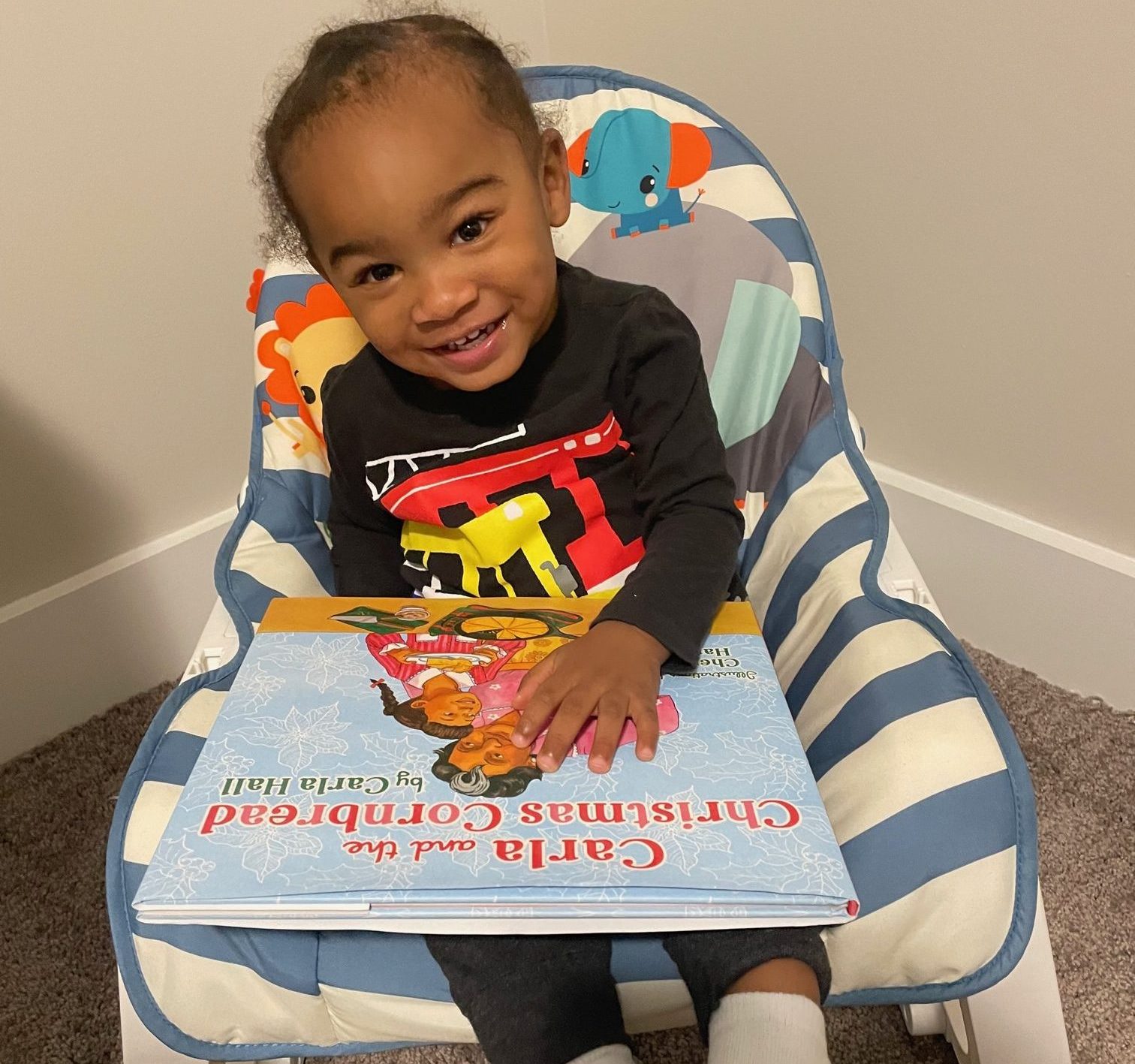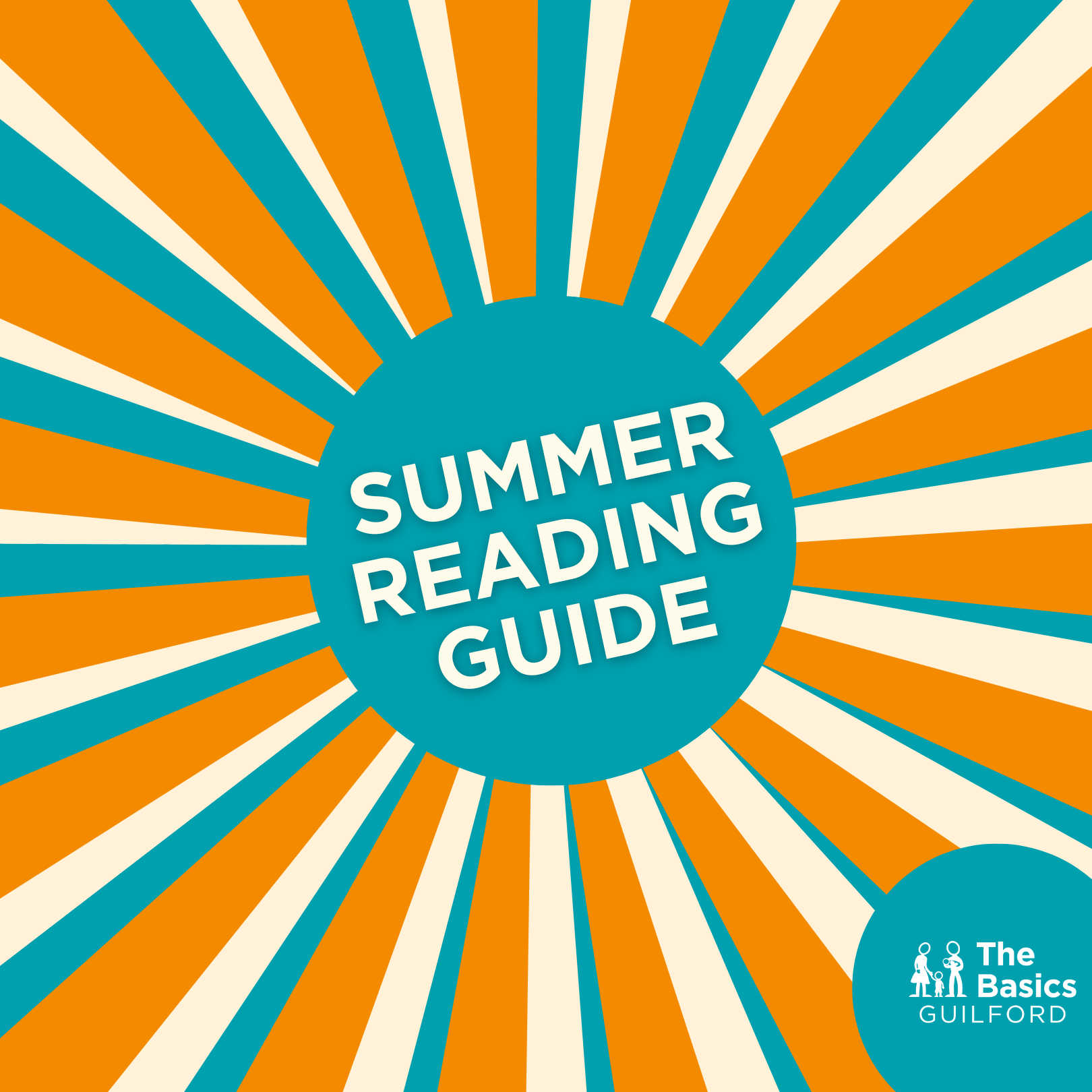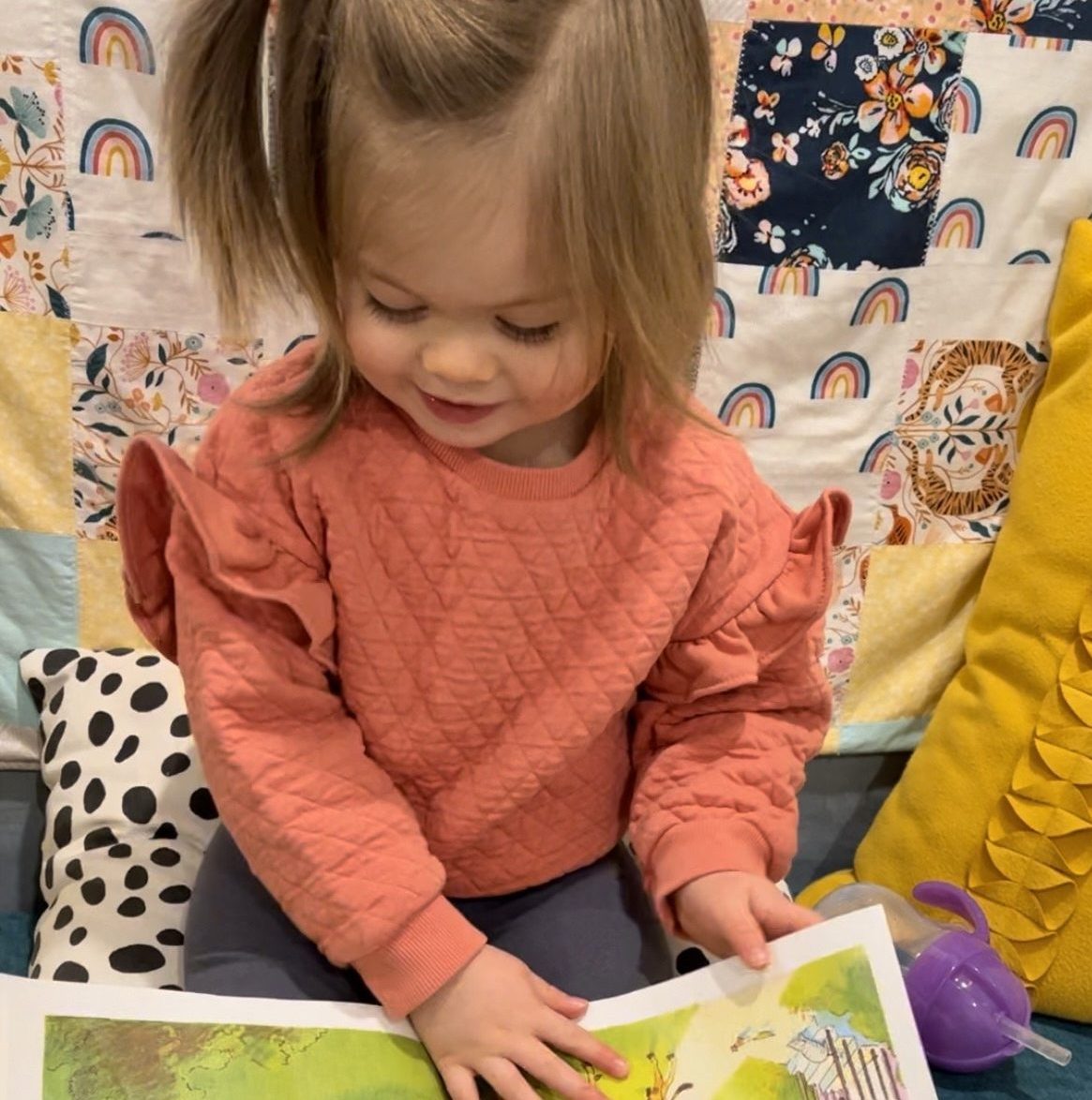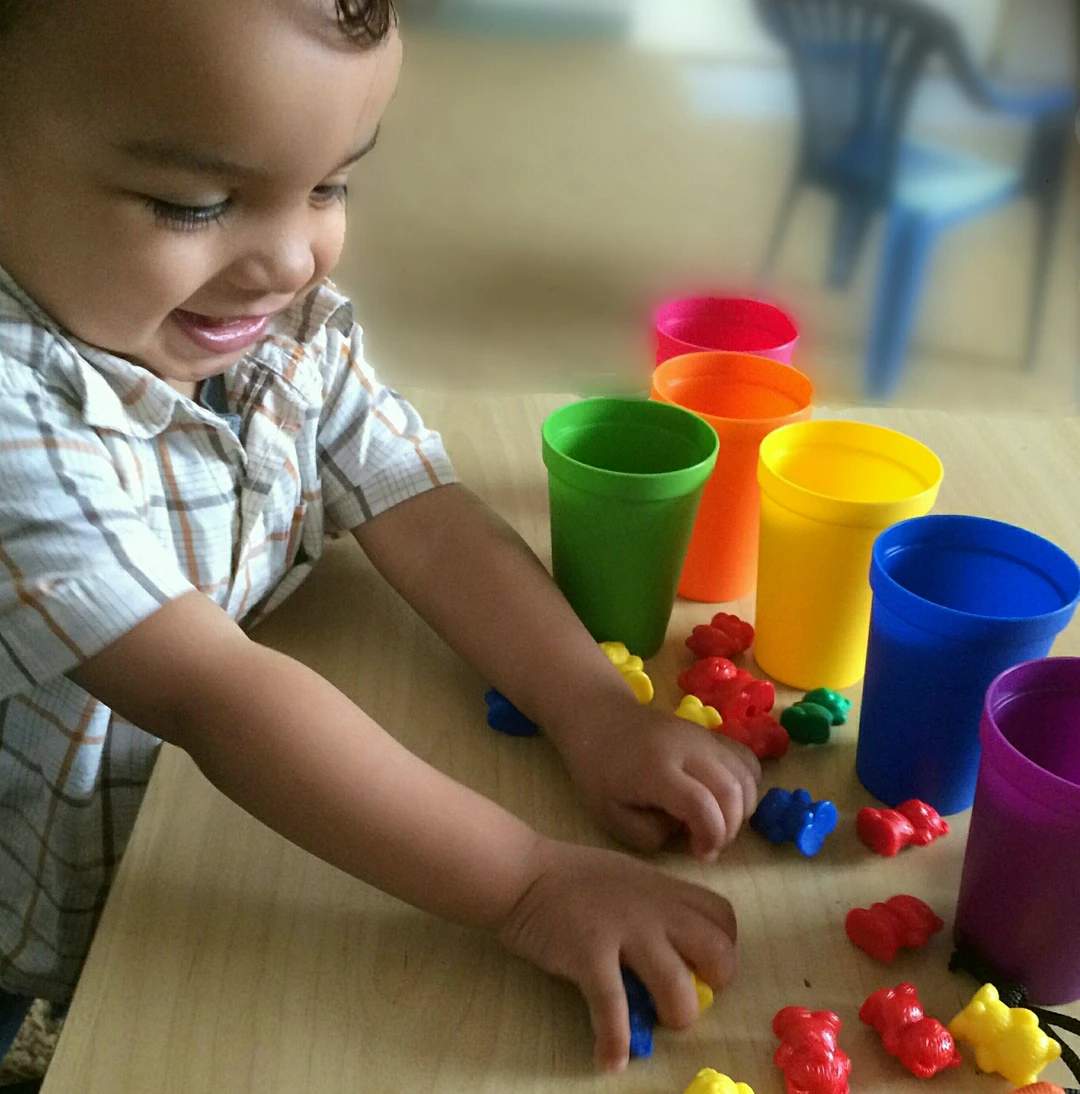POM POM PLAY TIME | We love multipurpose items in our house – and pom poms are a favorite! It’s amazing
how many games and activities we can play with them. All of them promote the Basic – count, group and compare!
Claire, 16 months, loves to put them into containers. We tape paper cups to the wall (we
use painter’s tape) and help her sort them by various sizes and colors as she puts them
into the cups. It’s an easy activity with minimal prep and clean up, and it’s a great
learning opportunity!
Eleanor, 2 years, also loves pom poms! We string painter’s tape between two walls with
the sticky side up, and Eleanor will use plastic tongs to put the pom poms on the tape in
a line (Great pre-writing activity for increasing grip strength)! We make patterns with them and count how many we can fit on the line. It holds her attention and she’ll often do this activity independently if it is set up for her.
Of course, pom poms are also just fun to play with! My favorite is when the girls are
under the kitchen table and tossing the pom poms back and forth. The giggles are
contagious!
By Lizzy Tahsuda
